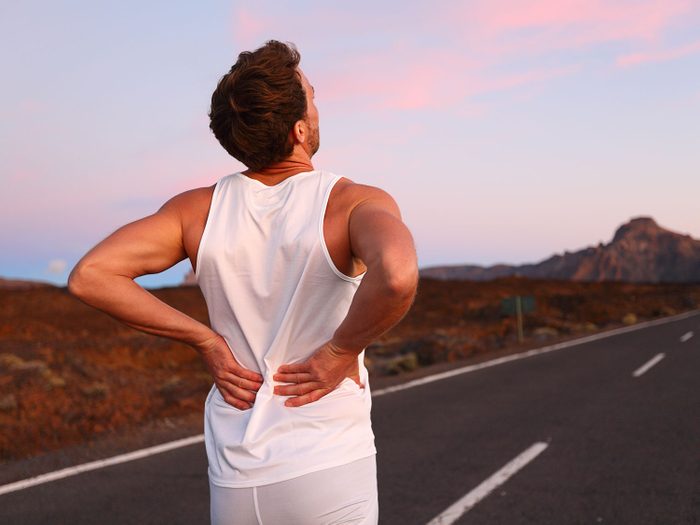
7 Pain Management Therapies Worth Considering
The pain in your lower back has swelled to a constant throb, so your physician has finally referred you to a physiotherapist. The physio’s recommendation? A combination of low-level laser treatment (LLLT) and clinical Pilates to ease the pain.
But what exactly is LLLT-or clinical Pilates, for that matter? Or any of those other pain management therapies advertised in the brochures at your physiotherapist’s office?
Here’s a handy primer on seven of the most frequently-prescribed pain management therapies in Canada.
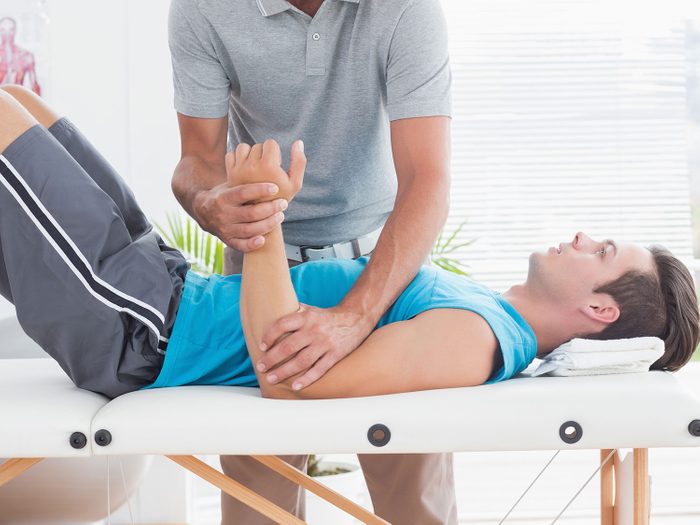
Active Release Treatment (ART)
Whether you’re suffering from shin splints, knee pain or headaches, you might find relief with Active Release Treatment (ART). It’s a versatile pain management therapy that works muscles, ligaments and nerves to help alleviate a wide range of painful conditions. “Active Release Treatment is the domain of massage or athletic therapists,” says Janet Holly, an Ottawa-based physiotherapist with the Canadian Physiotherapy Association’s Pain Science Division. These therapists draw on an arsenal of more than 500 different movements when working your deep tissue with their healing hands.
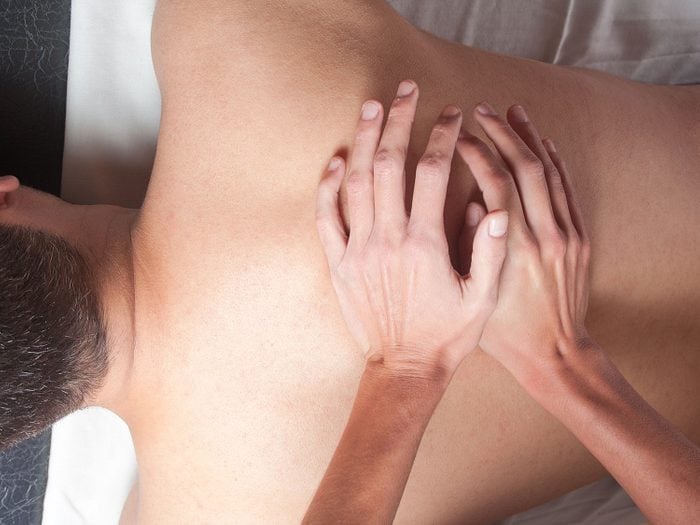
Massage Therapy
Not as deep or intense as Active Release Treatment, massage therapy involves the application of pressure to injured areas via rubbing, kneading and pressing. While it often has a relaxing effect, massage therapy can also help improve circulation and relieve pain.
Check out these 5 Self-Massage Techniques!
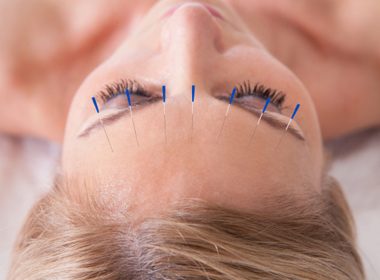
Acupressure and Acupuncture
Both acupressure and acupuncture draw on the same Chinese tradition of targeting pressure points to relax the nervous system, improve blood flow and relieve pain. In the case of acupressure, that pressure is applied by a practitioner’s fingers; with acupuncture, it’s applied via small, fine needles. A 2016 Spanish study in fact noted that acupuncture might help people who suffer from the painful condition of fibromyalgia.
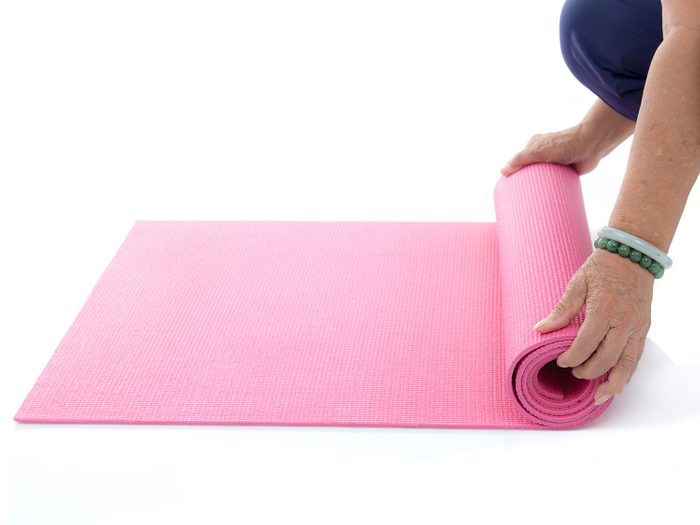
Clinical Pilates
If you’re recovering from an injury-or trying to prevent a new one-you might consider clinical Pilates. It’s often used to relieve repetitive strain injuries, back and neck pain, pre- and post-natal pains and sports injuries. Unlike the Pilates classes you may have attended in a studio or gym, clinical Pilates is performed one-on-one with a registered physiotherapist or exercise physiologist (EP). The practitioner will take you through exercises to strengthen weak muscles and improve flexibility, sometimes using equipment like stability balls, strengthening bands, weighted balls and yoga mats.

Hydrotherapy
As its name suggests, hydrotherapy involves manipulating and exercising muscles and body parts in water-oftentimes a pool. “The nice thing about water is that it tends to be a more comfortable place to initiate exercise,” says Holly. That’s why many people who need to practice walking after undergoing surgery or being injured prefer to take their first steps in water. “You can use the water to create resistance, to help with movements, work on balance and more,” she says.
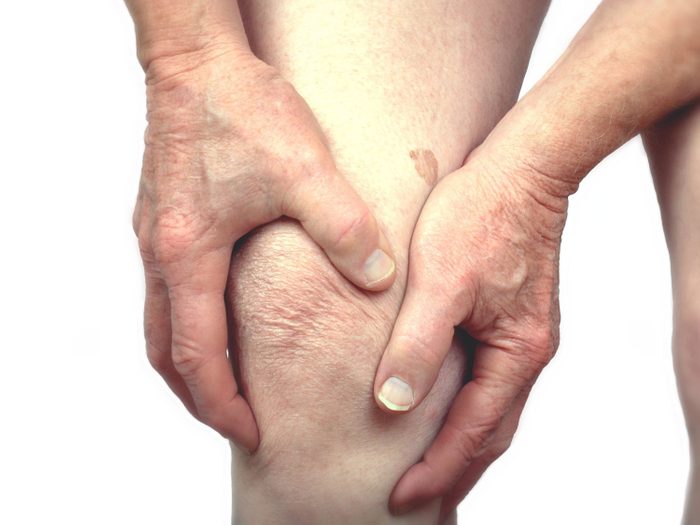
Low-Level Laser Treatment (LLLT)
While high-level hot lasers are commonly used in surgery, low-level (“cold”) lasers are used as a pain management therapy. Low-level laser treatment (LLLT) penetrates the skin to reach damaged tissues, improving blood flow, reducing inflammation and helping new tissue grow. LLLT can be used to alleviate the pain associated with osteoarthritis and chronic conditions such as tendonitis, and is generally paired with a complementary therapy.
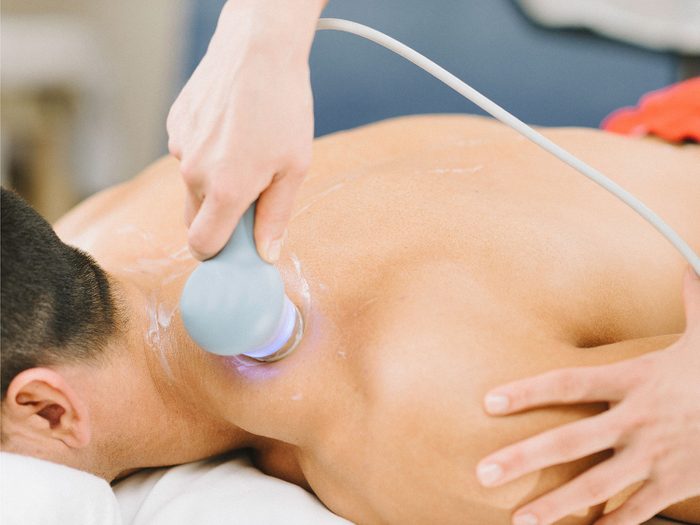
Ultrasound as Pain Management Therapy
While LLLT uses lasers, ultrasound employs ultrasonic waves to stimulate the body’s tissues through vibration. Ultrasound used to be broadly applied as a pain relief therapy, but new research shows that it’s more effective on certain conditions than it is on others, including rotator cuff tendonitis, plantar fasciitis and, according to Holly, cases of thick edema (swelling).